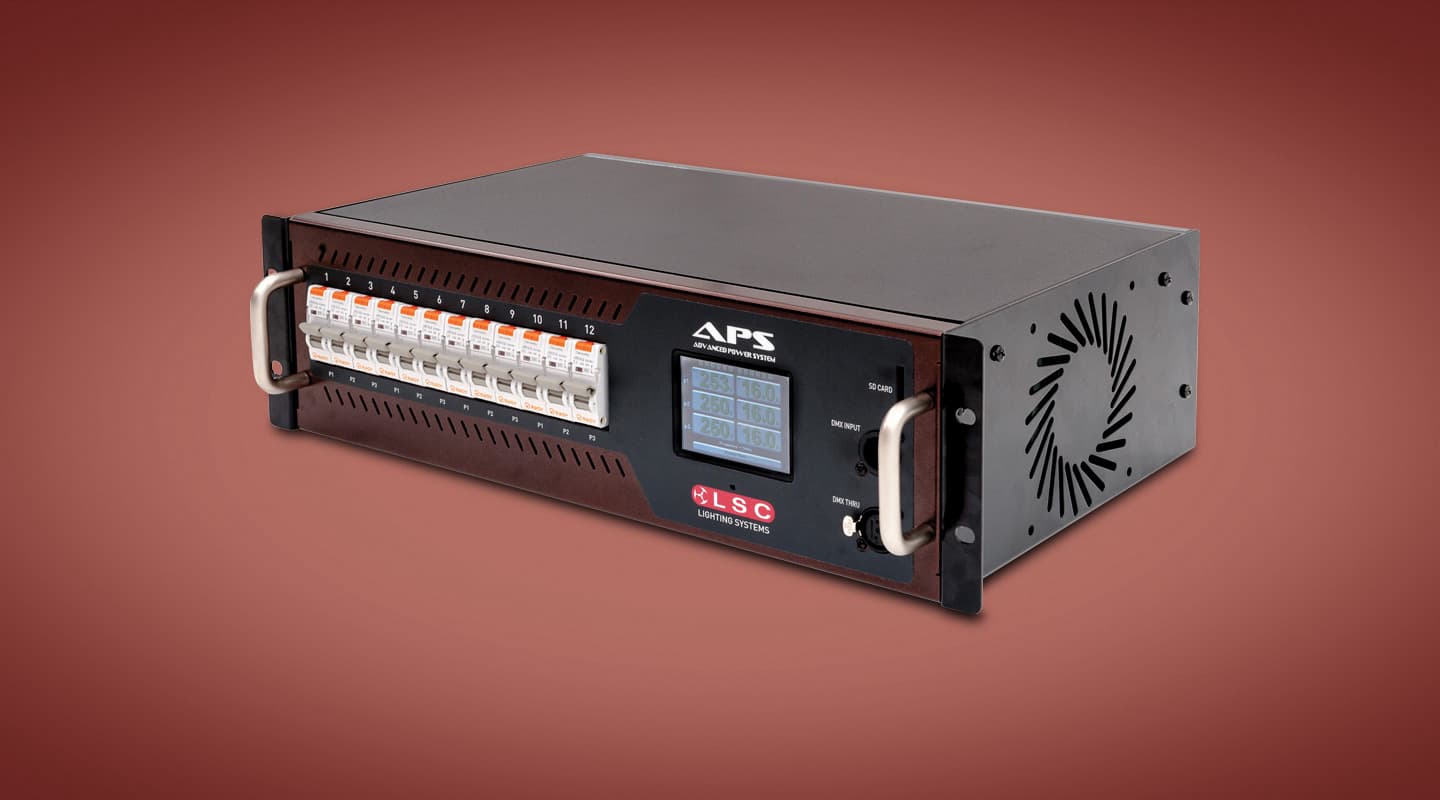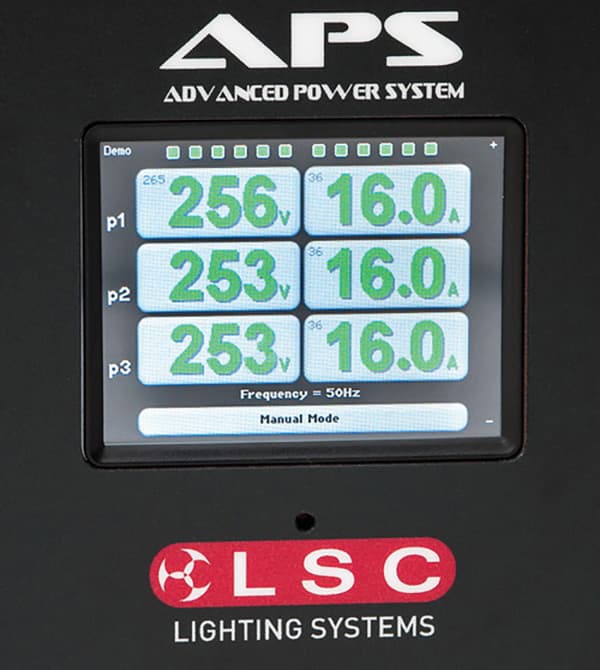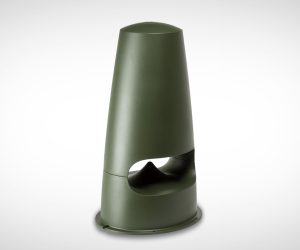
Power to the People
LSC’s GenVI dimmer and APS distro.
Review:/ Marcus Pugh
While we may all get excited about the latest projector, LED screen, speaker cabinet, software defined network, signal processor, media server or lighting fixture, there’s one critical element of every system that’s frequently overlooked and rarely the subject of discussion – much less innovation and excitement. I’m referring of course to the stalwart power distribution box (distro) or dimmer rack that sits quietly in the corner of every system, feeding it with the power that actually makes it go.
While you’ve been looking the other way, counting lumens and worrying about the system’s STI, the team at LSC Lighting has been quietly going about the business of using the advances in sensing and processing technologies to make dimmers and distros smarter too. In the last 12 months LSC has released what I would consider to be the most advanced dimmer and distro available to the AV industry: the Advanced Power system (APS) distro and the GenVI advanced dimming system.
THE DISTRO GETS SMARTS
A power distro is no longer just a dumb box converting power from big outlets to smaller ones. LSC has looked at the changing demands of the industry and some of the problems presented by new technologies that have become commonplace. Anyone who has ever powered up a large number of lighting fixtures, LED wall modules or amplifiers at the same time soon becomes aware of that nasty little phenomenon known as inrush current which causes the troublesome tripping of circuit breakers. Traditionally this is avoided by appointing a skilled technician to learn the configuration of the system then power up each device individually while taking care to maintain load balance across the supply phases.
APS addresses this by offering a staggered start-up of each circuit, enabling sequenced load ramp-up while maintaining phase balance. The sequenced start-up can also work in concert with other APS racks linked via DMX512. The APS can also be remotely controlled via DMX512A and GPI (contact closure) and both remotely monitored and controlled via RDM.
An APS can also be programmed to power up when a stable DMX signal is detected, in other words when the lighting console is turned on, and can also power itself down when no DMX signal is detected for some minutes, ie. when the console is turned off. This feature means that a venue or system can be left in the hands of inexperienced people without worrying about the systems being left powered up after use.
LSC Lighting Systems: [email protected] or +61 (0)3 9702 8000

“”
In the last 12 months LSC has released what I would consider to be the most advanced dimmer and distro available
SERIOUS PROTECTION
The APS has all the features one would expect from a top-of-the-line 21st century distro, including supply voltage and load-current monitoring, trip indication, and a colour touchscreen for local data display and menu navigation. Each circuit is fitted with a double-pole (switches both load and neutral) RCBO (Residual Current Breaker with Overload) which is the equivalent to an RCD/GFI earth-leakage safety switch teamed with a standard thermal/magnetic circuit breaker. This provides both a high level of safety for users and a high level of discrimination for fault isolation.
One of the best features for the festival and touring market is that the APS won’t power up on a generator until the incoming voltage has stabilised. A maximum and minimum supply voltage range can be set to automatically disconnect the supply from the loads in the case of voltages that could damage equipment. Impressive too is its ability to set load limits on individual circuits, which would be very handy in an install environment.
The APS is available in 12 x 10 Amp, 12 x 13 Amp, 12 x 16 Amp and 6 x 20 Amp configurations, and can be fitted with standard Australian GPOs, Socapex, Wieland, screw terminal and even Neutrik Powercon outputs
A BRIGHT FUTURE FOR DIMMING
I have worked extensively with LSC dimmer racks over the past 12 years and have always found them to be a great product, but the GenVI dimmer (their sixth generation of dimming technology) is not merely a sophisticated unit for dimming incandescent lighting fixtures, it’s also a sophisticated distro like the APS. Each channel can be independently set to dim mode with a selection of standard dimming curves in either 8- or 16-bit configurations, or relay mode for direct power distribution. In common with the APS, the GenVI is equipped with a colour touchscreen, RDM via DMX-512A , RCBOs on each channel and on-board DMX termination.
Everyone who has plugged a low-wattage load into a dimmer will know that most dimmers simply won’t dim the fixture because its current demand is too low to keep the switching device (triac) conducting. The conventional, although clumsy and often inconvenient fix, is to plug in an additional dummy load fixture to increase the current demand. The GenVI dimmer, however, uses pulse transformer triac firing that ensures that no matter how small the load, the dimmer will still dim it. I, of course, took this as a challenge, and started by plugging in a 50W 12V Par 16 (classic for not dimming). It worked, so I tried a 12W domestic work globe which it dimmed without fuss. I moved onto a 3W Littlite (gooseneck console light), which dimmed, so I then bought out the small guns, testing a 3mA nightlight from my son’s room and lo and behold, it too dimmed. At this point I finally admitted defeat.
Service techs everywhere know that the first component to fail in a dimmer rack is the triac switching device because of the large fluctuating currents they handle, and the most problematic issue with a relay is the arcing which occurs every time the contacts open and close. LSC has worked around both of these issues by taking advantage of the dual functionality of the unit. When a channel is in relay mode it momentarily utilises the triac to handle the initial load so that when the relay contacts close there is no arcing. Conversely, when in dimming mode, if a channel is snapped to full, the relay is closed to relieve the sudden inrush current on the triac. This means LSC is the only company, to my knowledge, that offers a two-year warranty on triacs (an element often excluded from parts warranties). Like the APS, the GenVI is available in 12 x 10 Amp, 12 x 13 Amp, 12 x 16 Amp and 6 x 20 Amp configurations, and can be fitted with standard Australian GPOs, Socapex, Wieland, screw terminal and even Neutrik powerCON outputs
I have been thoroughly impressed by both these racks. They are by no means the cheapest dimmers and distros on the market, but while innovation like this doesn’t come cheap, they’re already being picked up with enthusiasm all over the world for film and television production. In my view, spending a bit more on the equipment which powers your system is cheap insurance to help protect the even more expensive bits of kit in your rig.
















RESPONSES